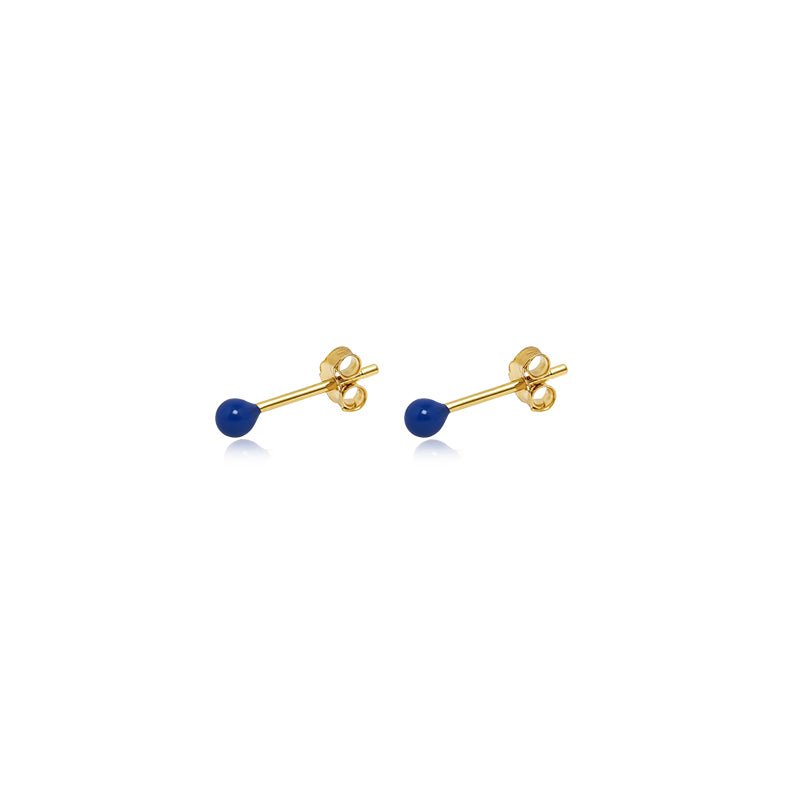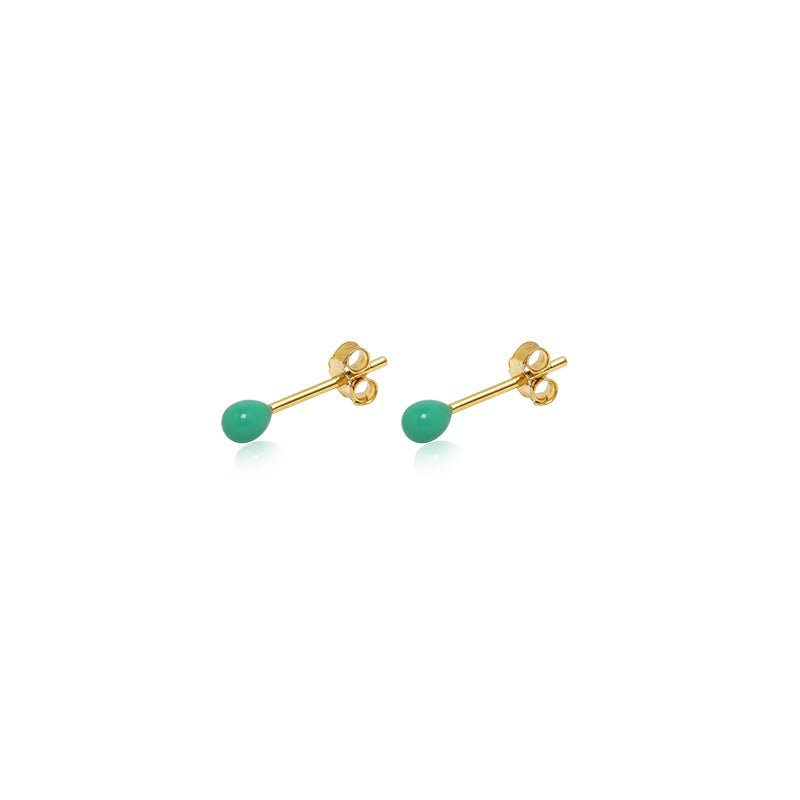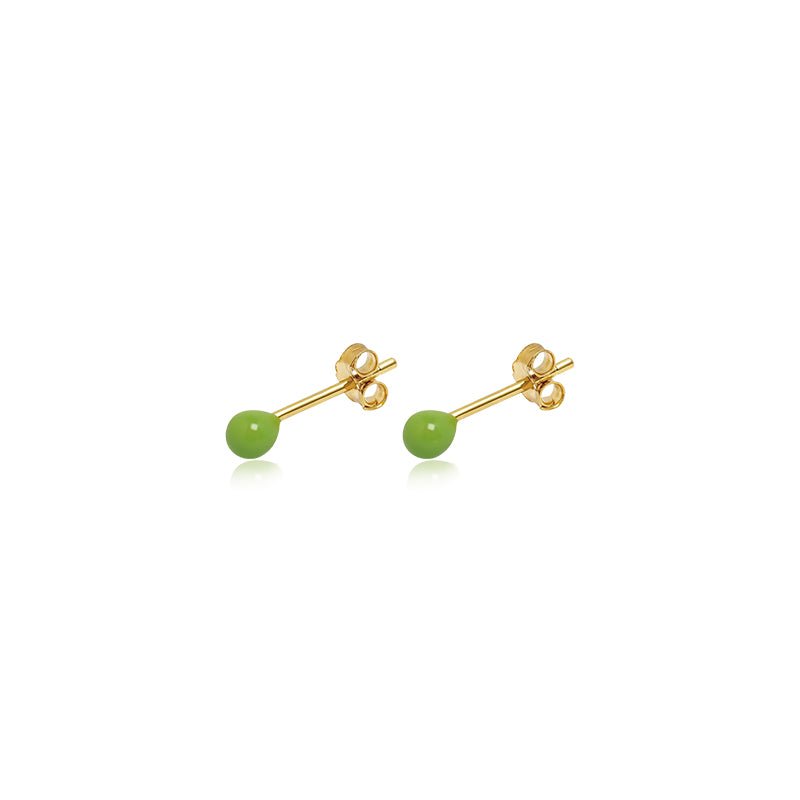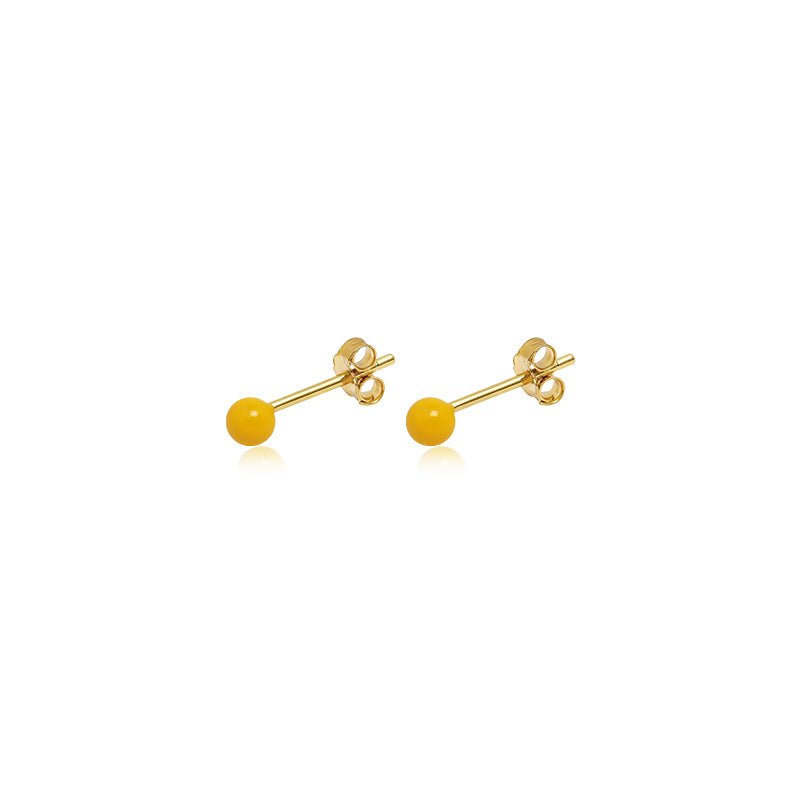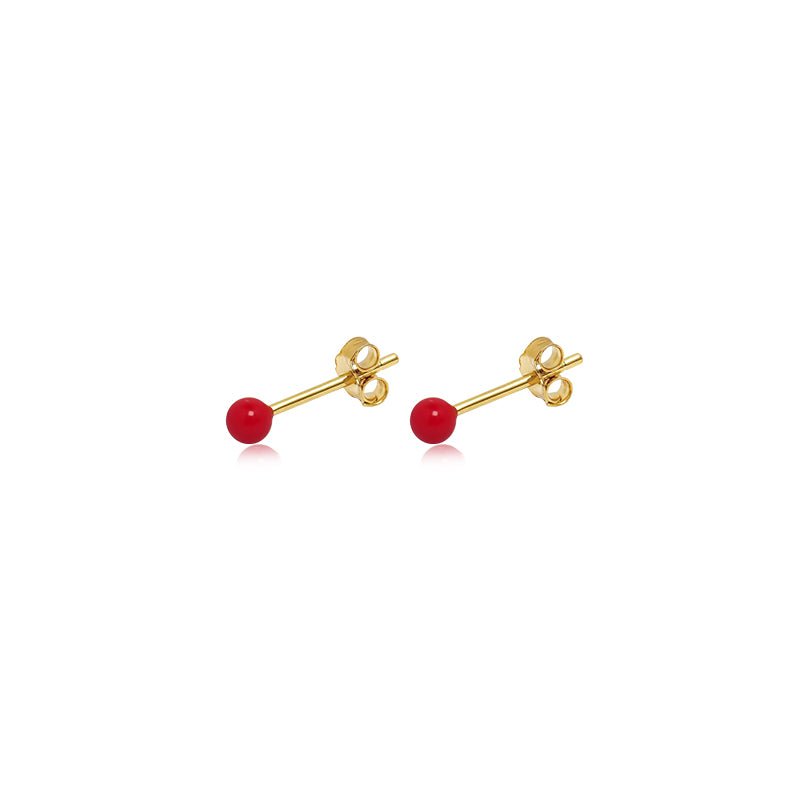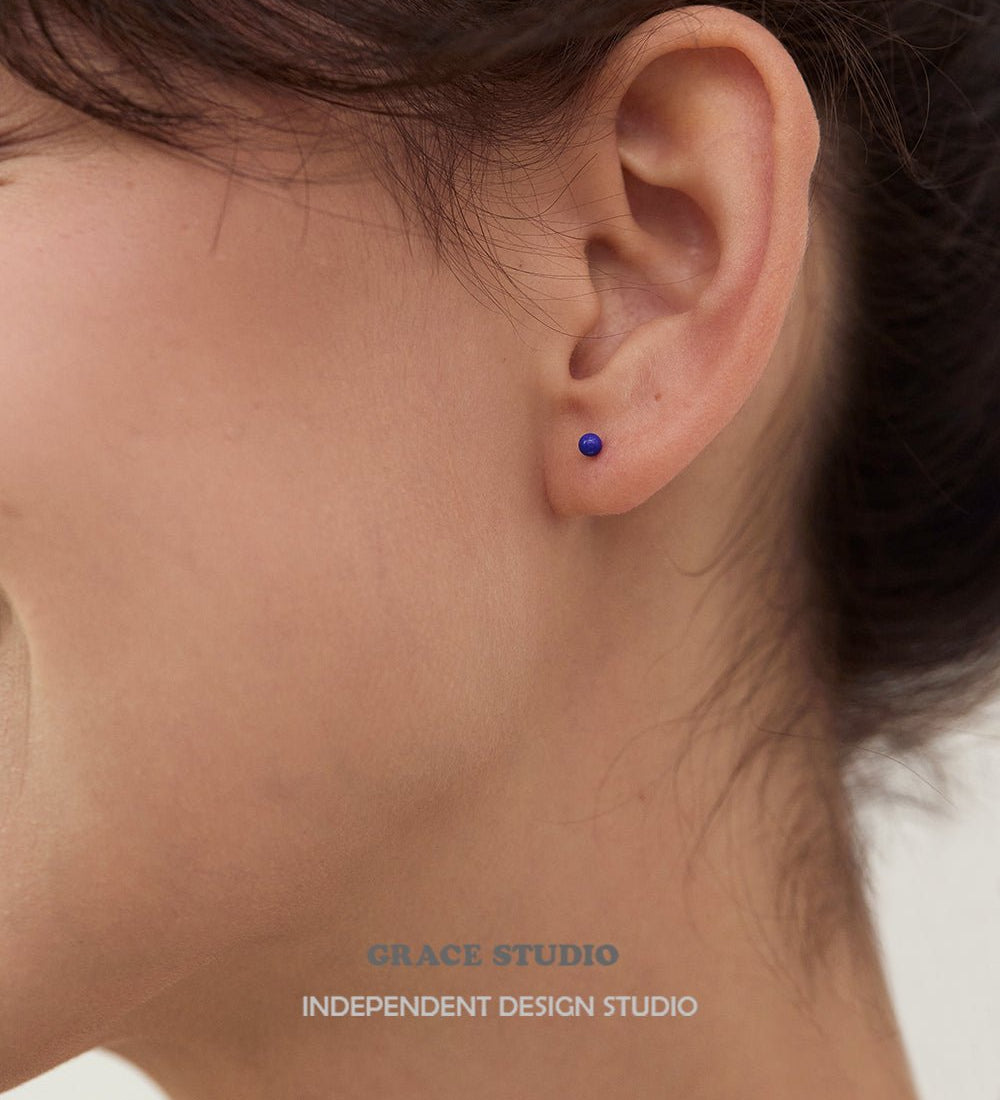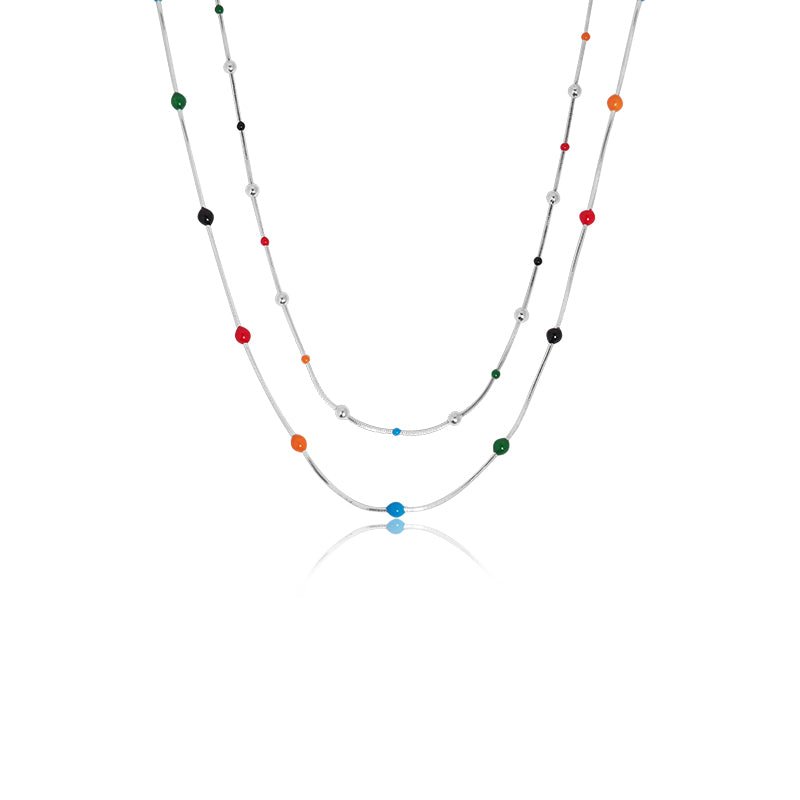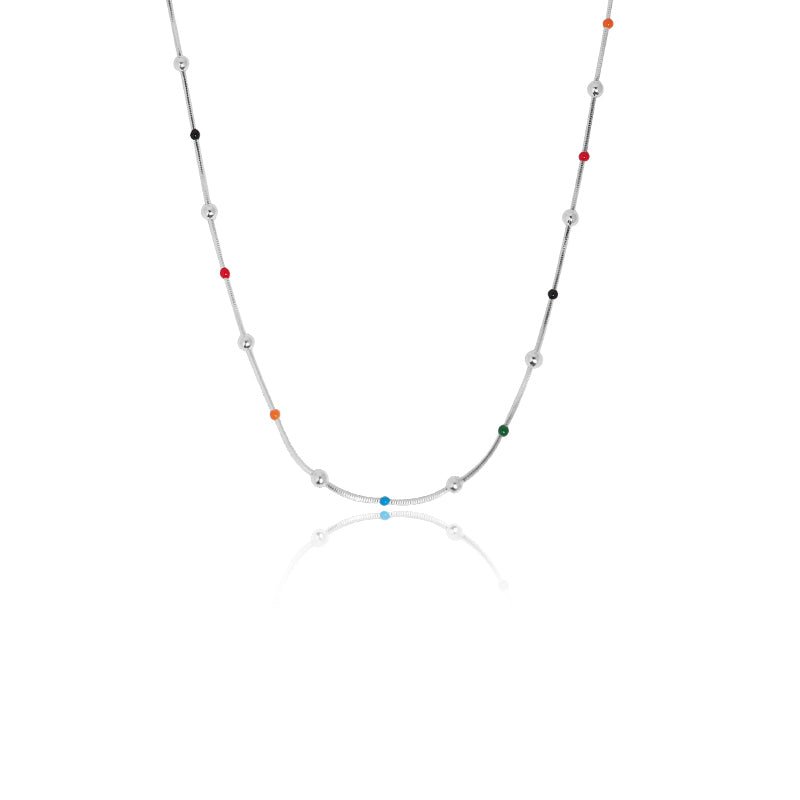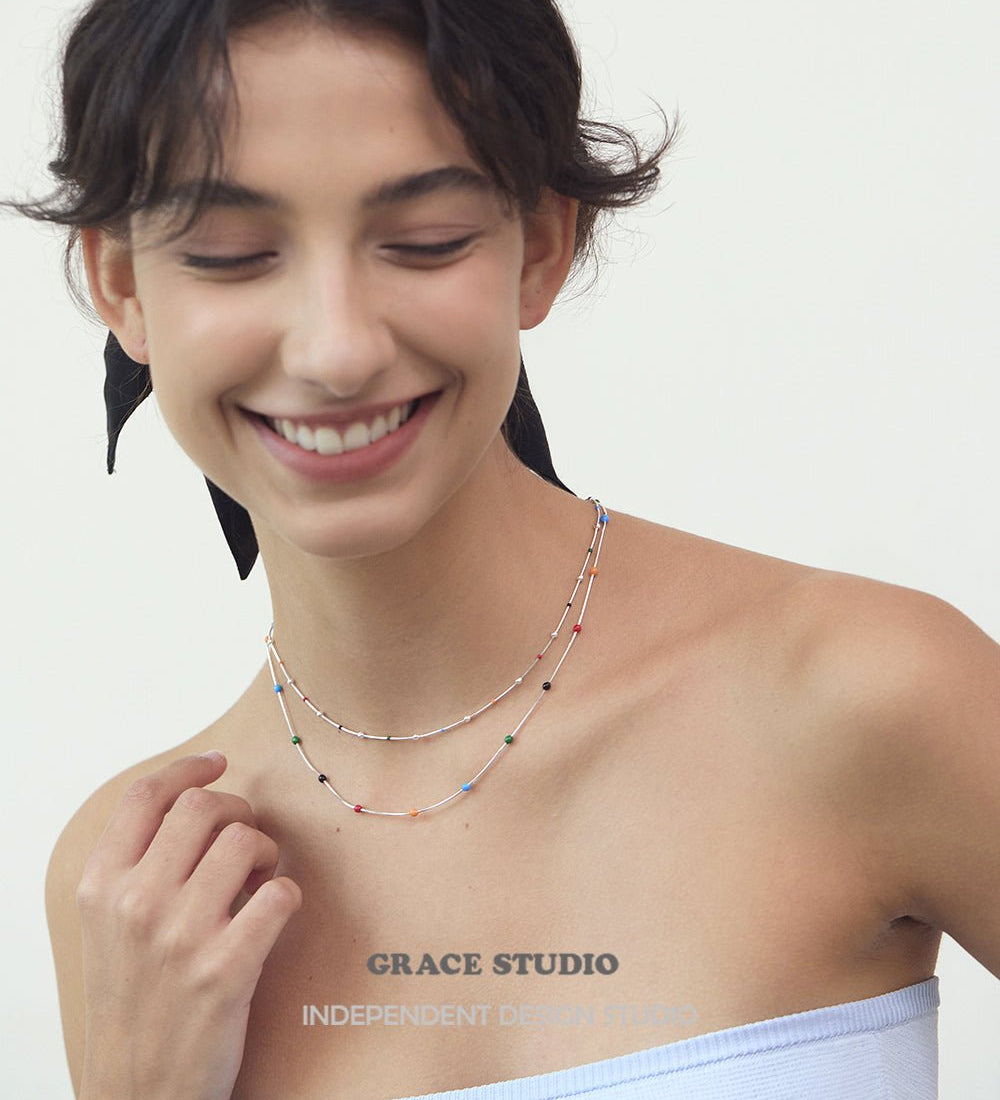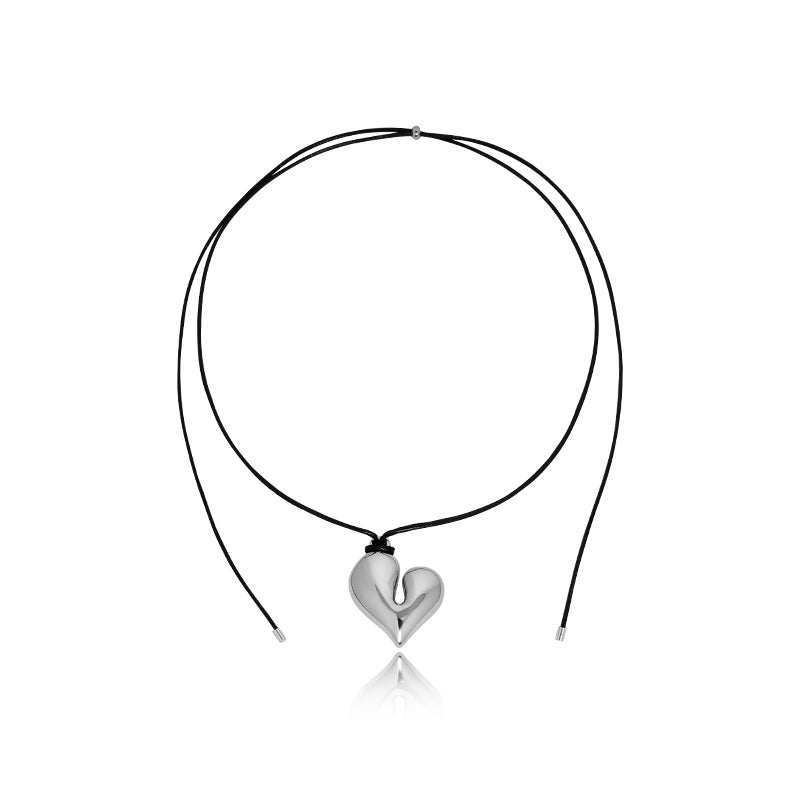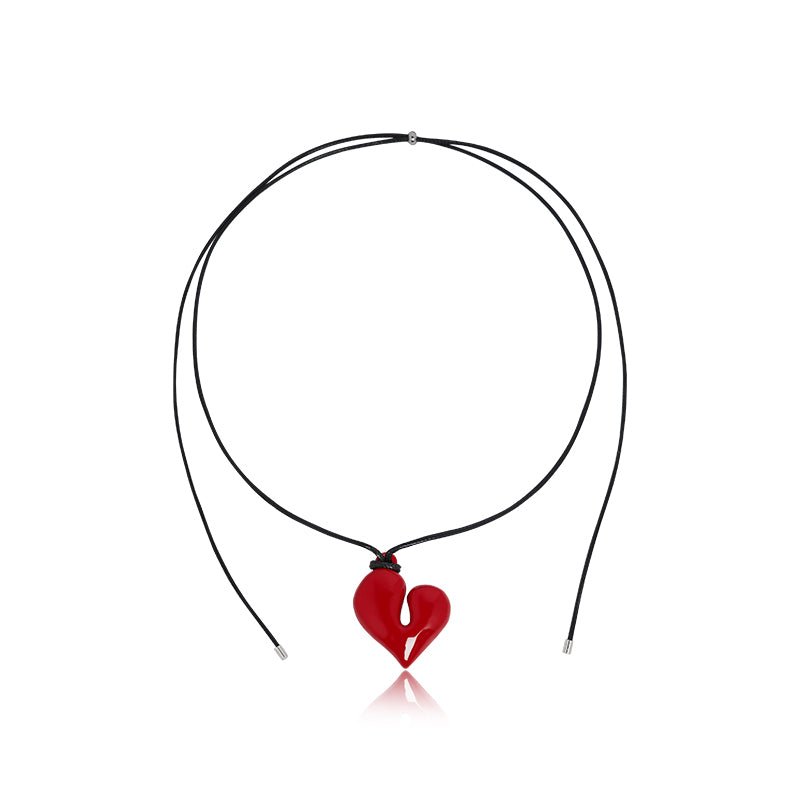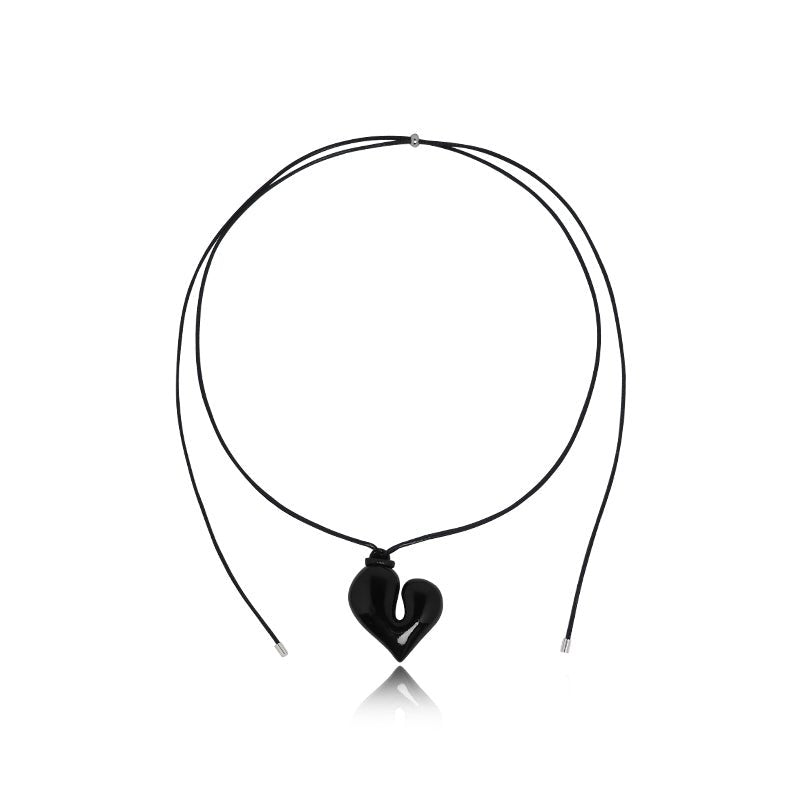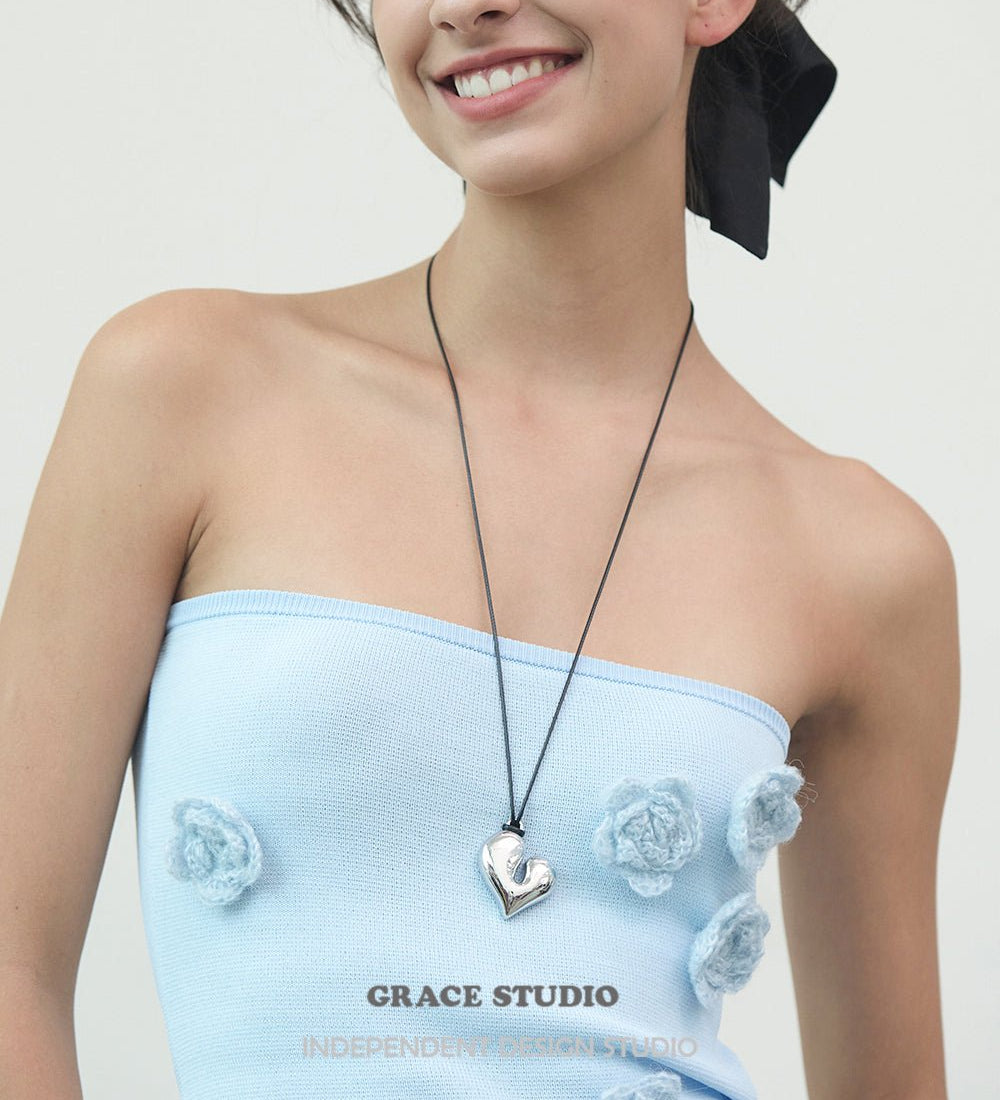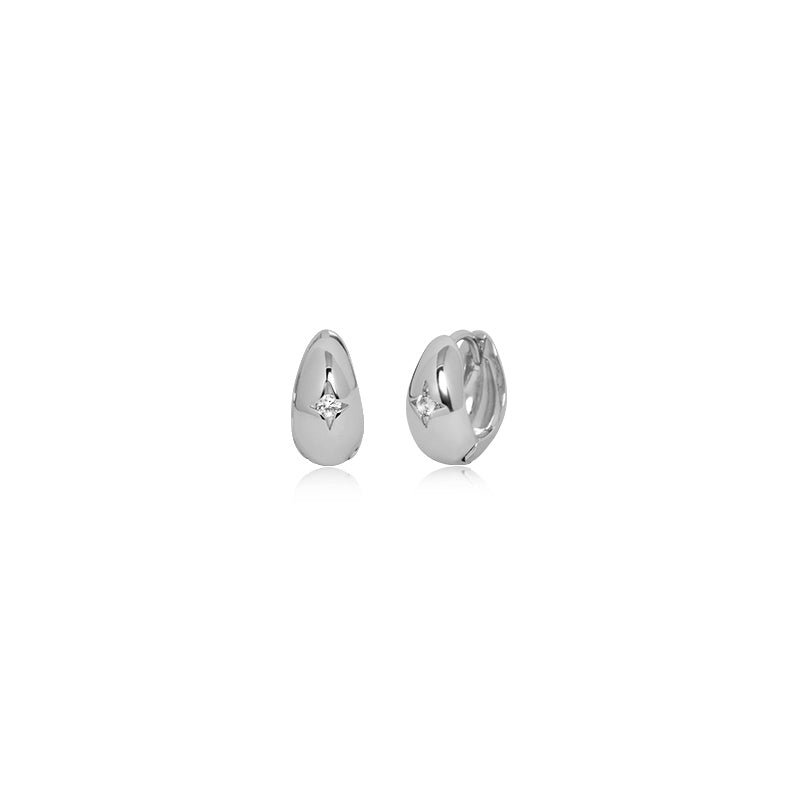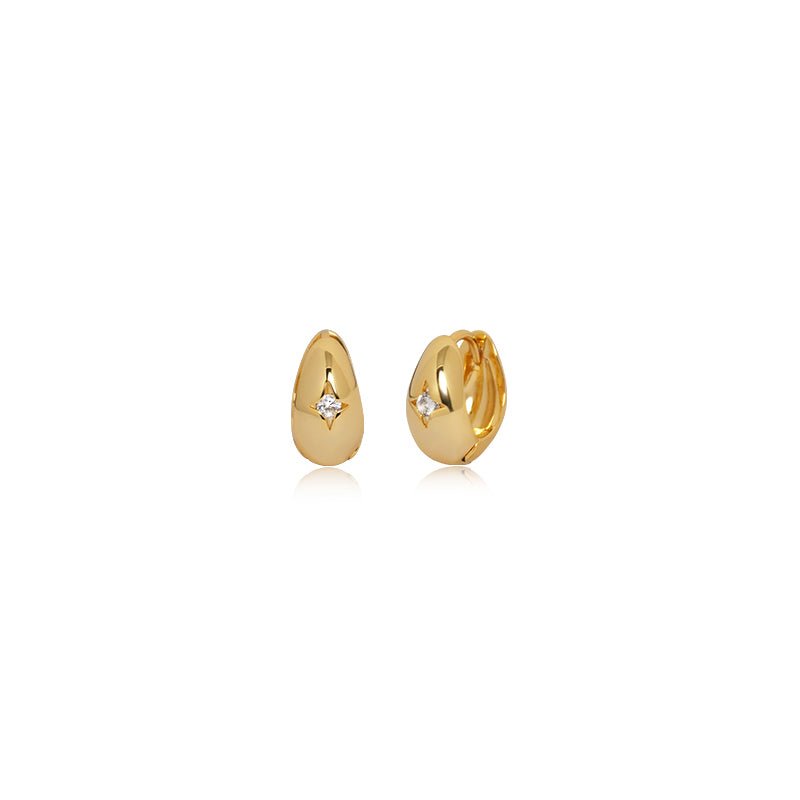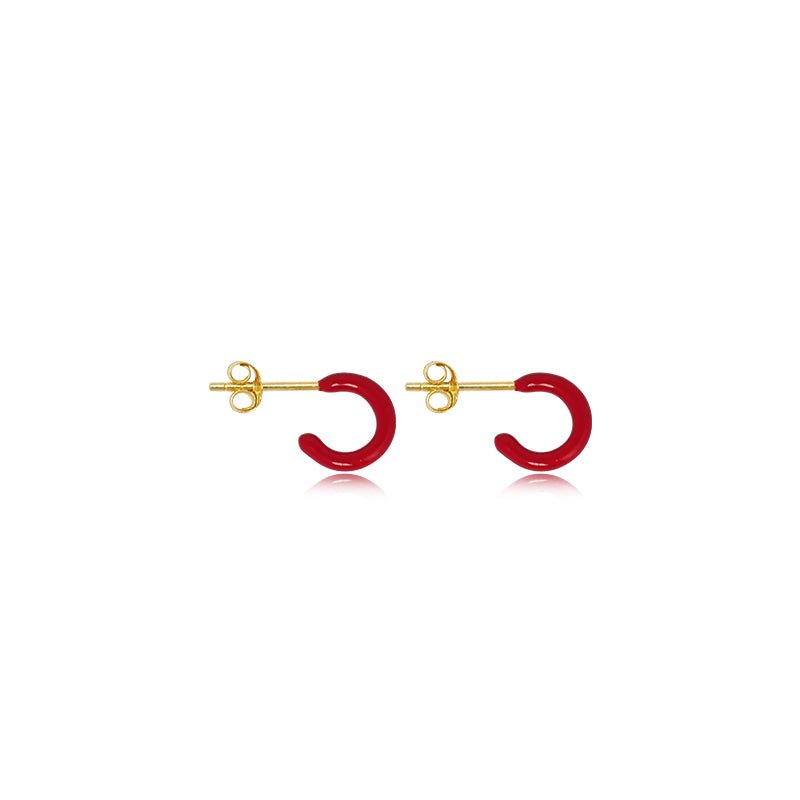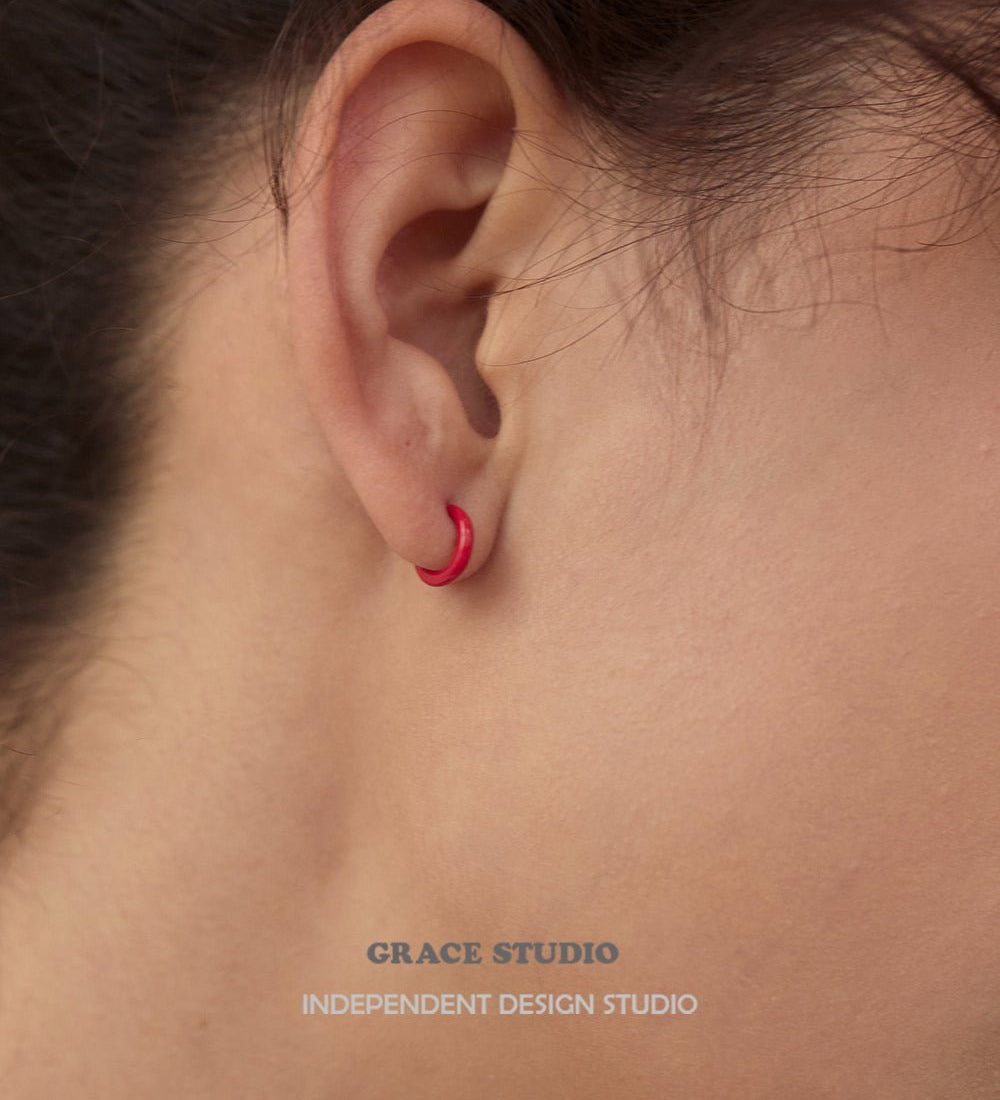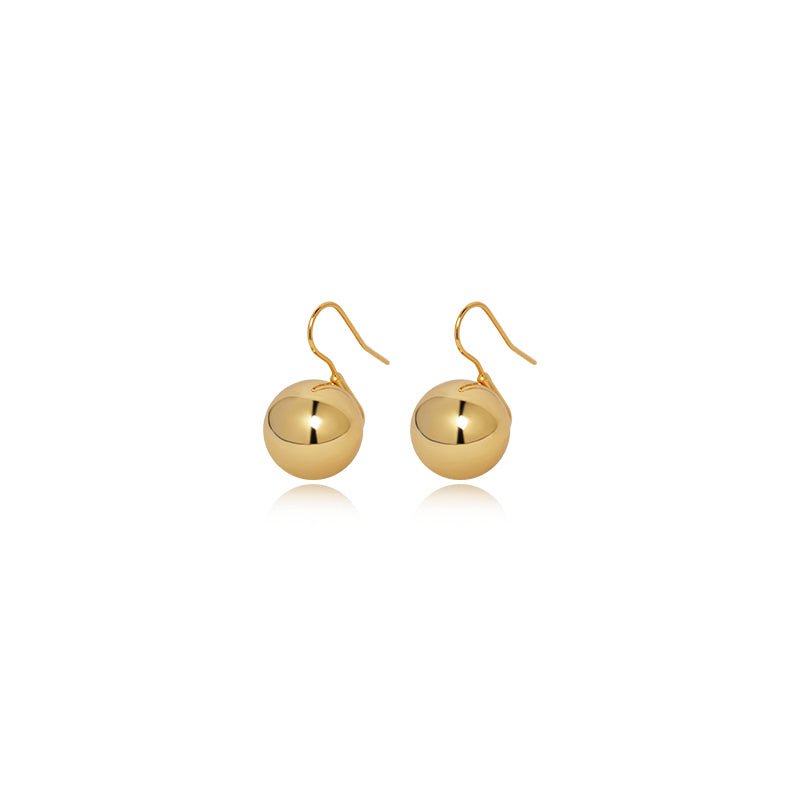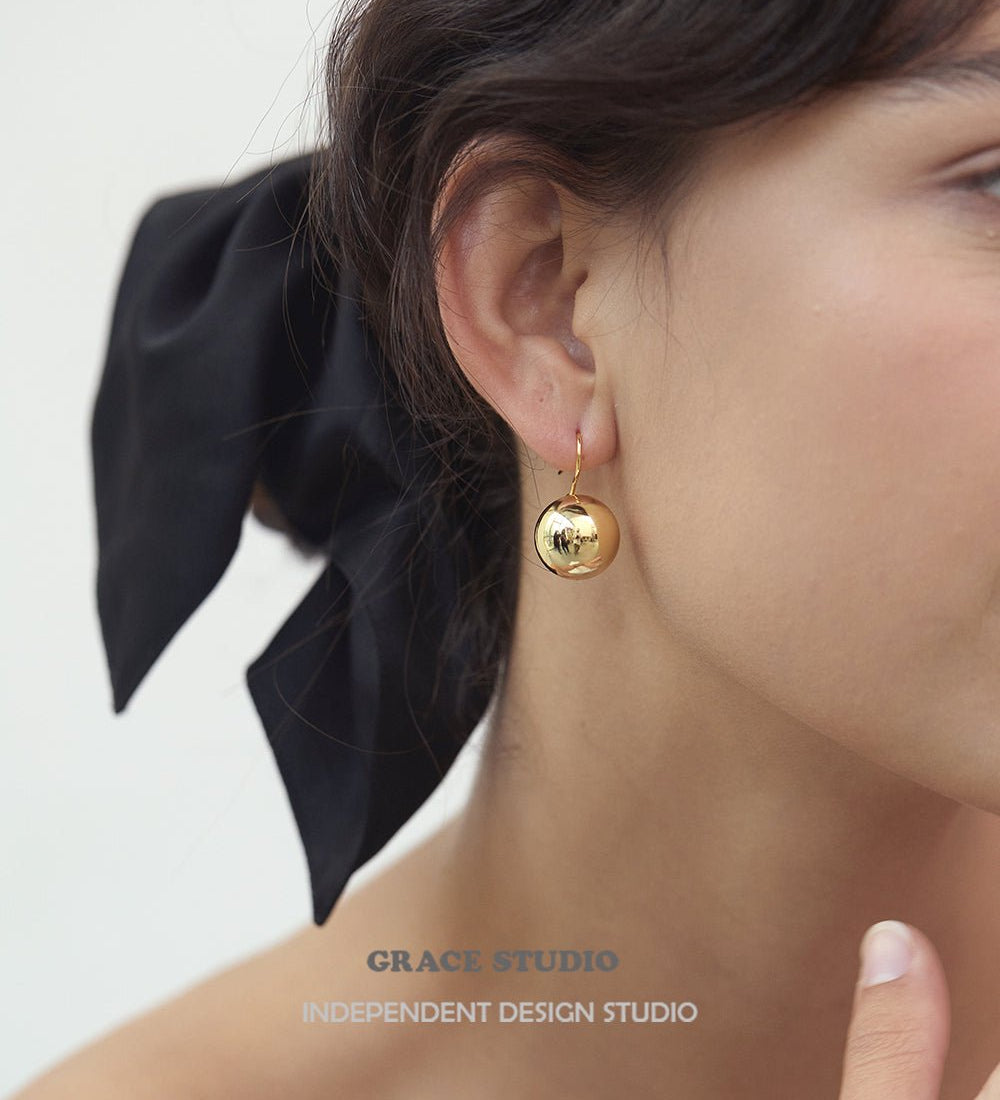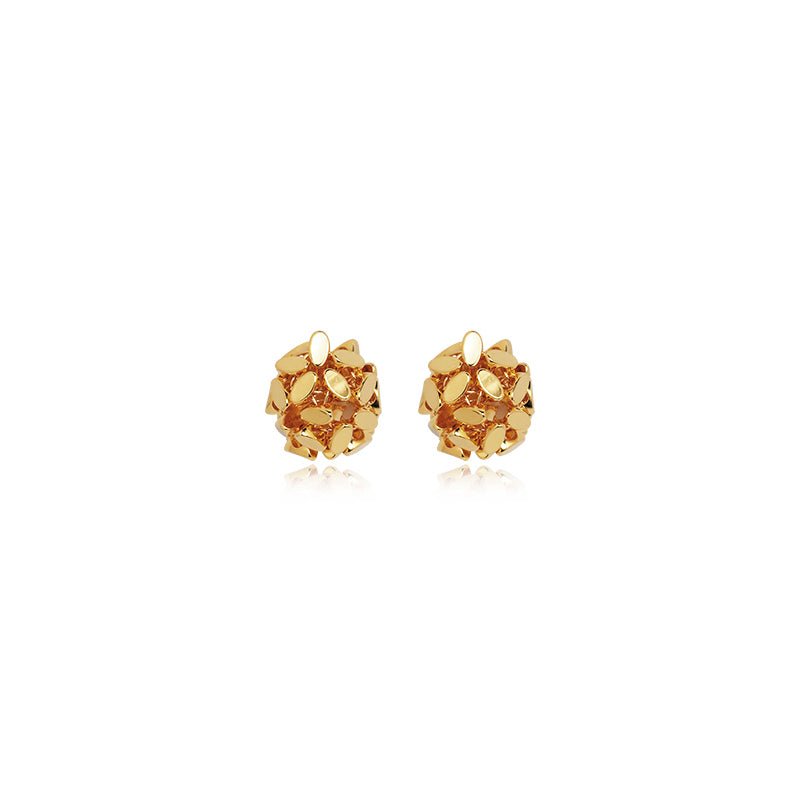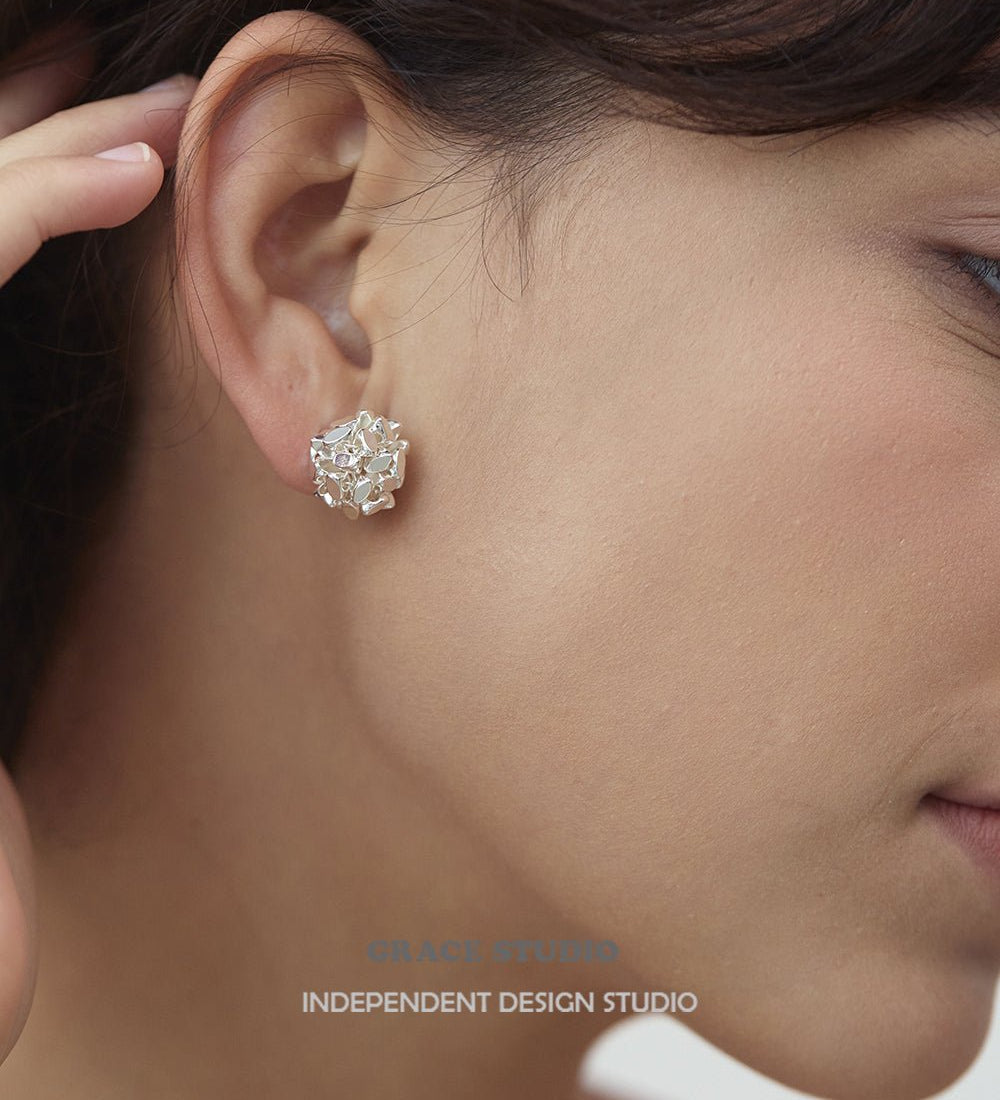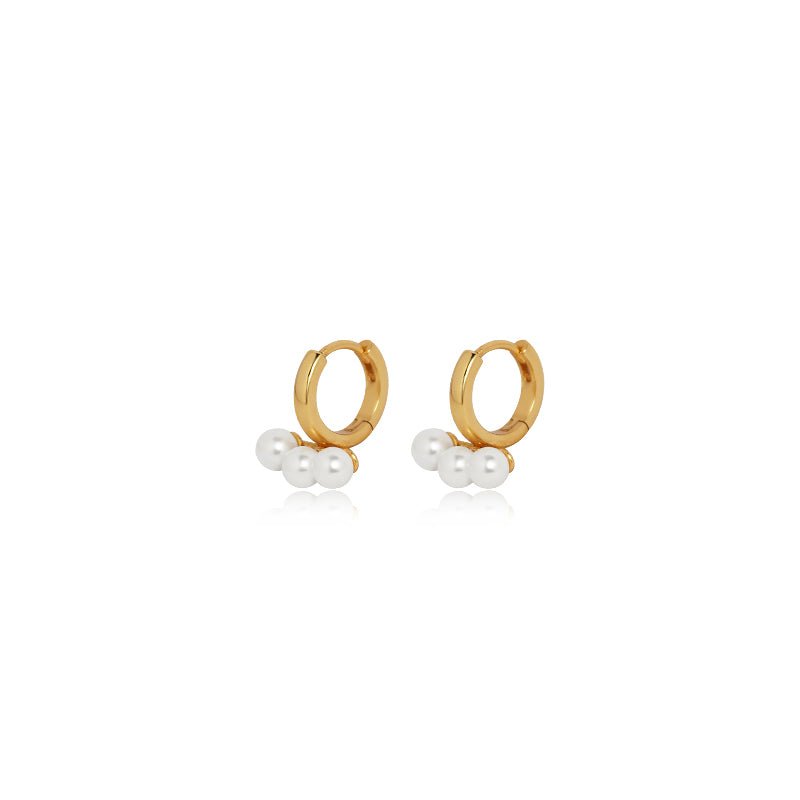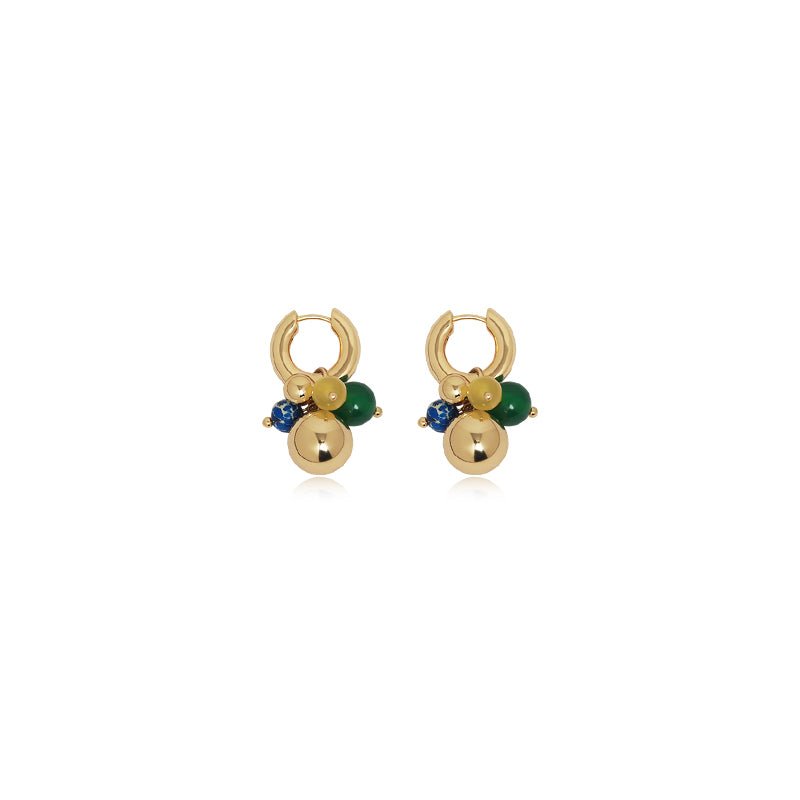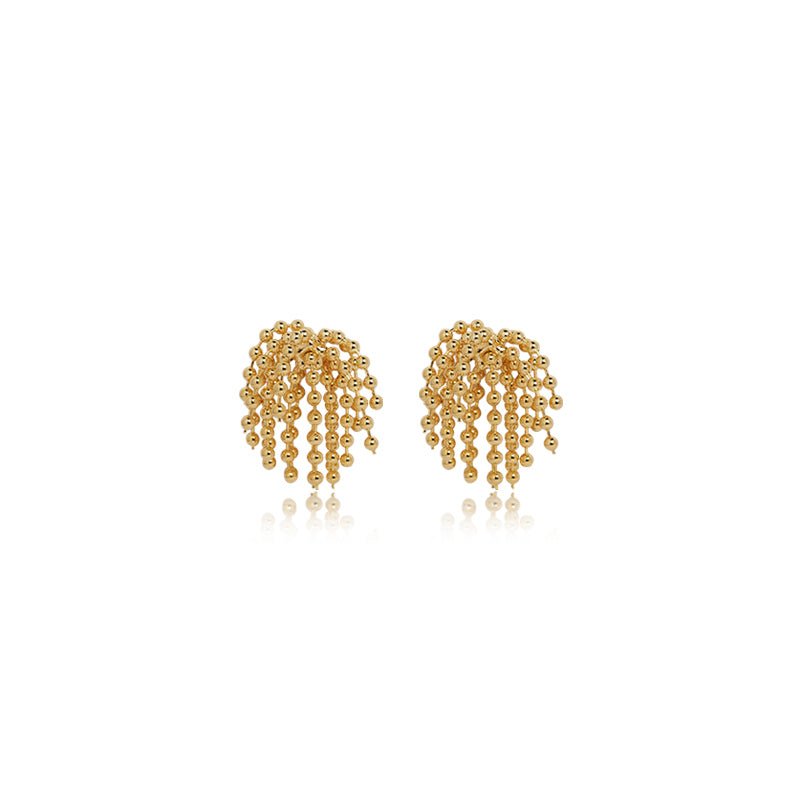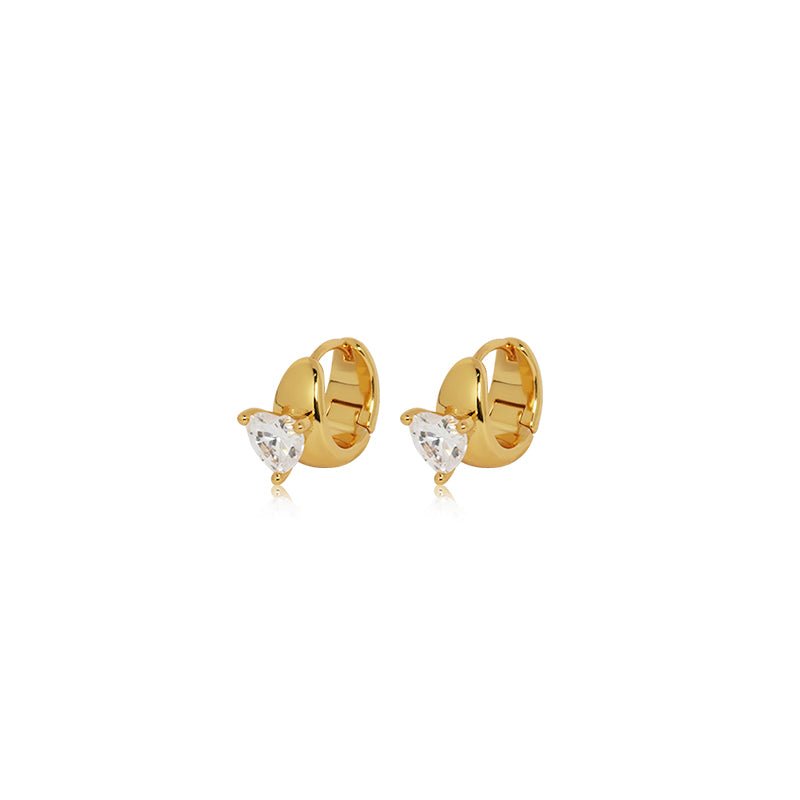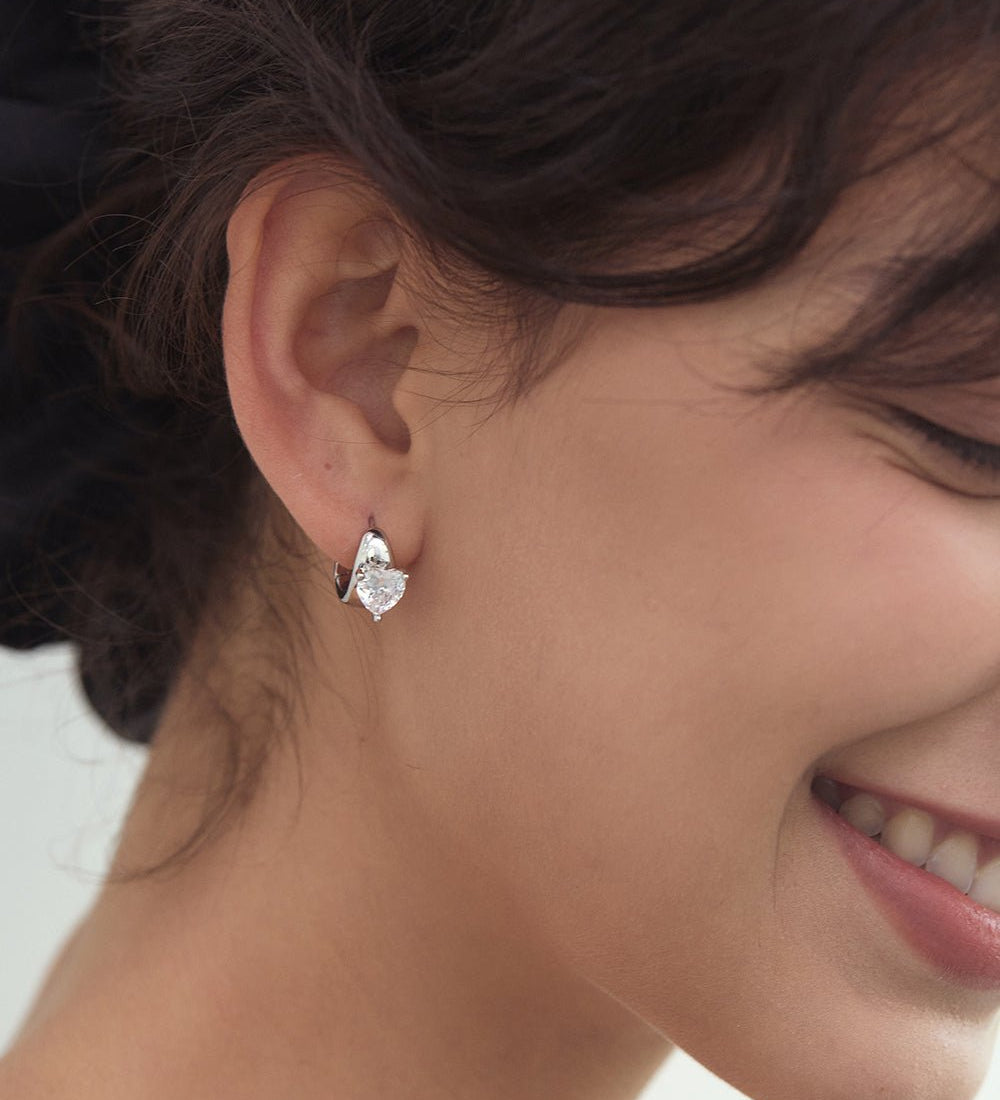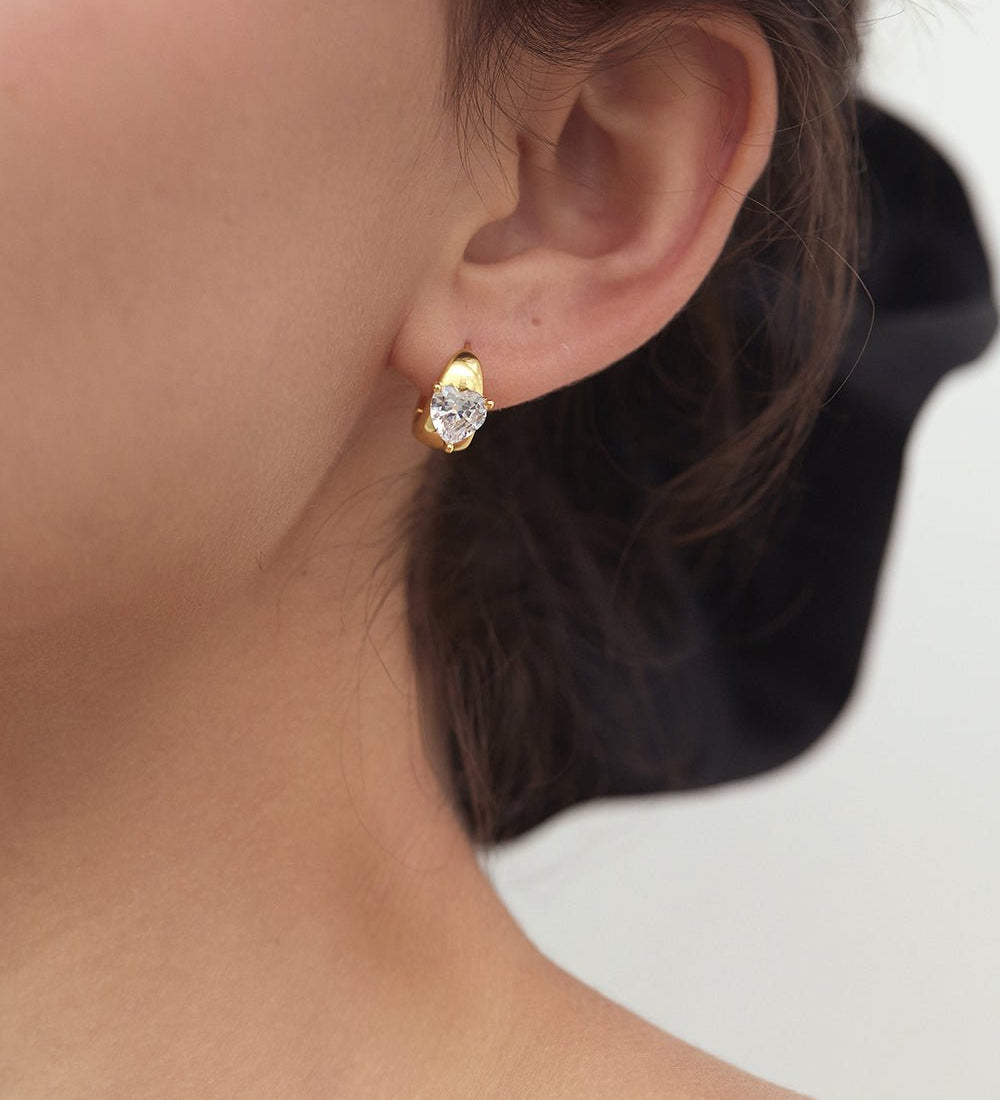Gold-Plated vs. Solid Gold: What's the Real Difference?
Have you ever found yourself gazing at a stunning piece of gold jewelry, captivated by its shine, but then hesitated? A little voice in your head might be asking, "Is this the real deal? Or will it lose its luster next month?" You’re not alone! It’s a common question, and one that trips up many a jewelry enthusiast.
Gold jewelry, in all its shimmering glory, comes in various forms. Two of the most common, and often most confusing, are "gold-plated" and "solid gold." They might look similar at first glance, but beneath the surface (quite literally!), they're worlds apart in terms of composition, value, durability, and how they’ll fit into your life.
This guide is your friendly companion, designed to cut through the confusion. We’re going to break down everything you need to know about gold-plated and solid gold jewelry, from their fundamental differences to practical tips on how to identify them and, most importantly, which one is the perfect choice for you. By the end of this journey, you'll be armed with the knowledge to shop smarter, wear confidently, and truly understand the gold glistening on your skin.
Understanding Solid Gold Jewelry: The Golden Standard
When we talk about "solid gold" jewelry, we're stepping into the realm of timeless elegance and lasting value. But what exactly does "solid gold" mean? Let's break it down.
What Solid Gold Truly Means
In the simplest terms, a piece of "solid gold" jewelry means that the item is made entirely of gold, through and through. It's not just a coating; the entire structure, from the surface to the core, is composed of gold.
However, there's a crucial nuance: pure 24-karat gold (which is 100% gold) is incredibly soft. Imagine trying to make a durable ring out of butter – it wouldn't hold its shape for long! That's why, for jewelry purposes, pure gold is almost always mixed, or "alloyed," with other stronger metals. These metals can include silver, copper, zinc, or palladium. This alloying process serves two main purposes:
-
Increased Durability: It makes the gold much harder and more resistant to scratches, dents, and bending, making it suitable for everyday wear.
-
Color Variation: Different alloys can subtly change the gold's color, giving us the popular yellow gold, white gold, and rose gold varieties. For example, adding more copper creates a beautiful rose gold hue.
So, while we say "solid gold," it’s typically an alloy, but the entire piece is made of this gold alloy. It’s not just a surface layer.
The Karat System: Unveiling Gold's Purity
To understand solid gold, you absolutely need to understand the Karat (K) system. This is your key to knowing exactly how much pure gold is in your jewelry.
-
What is a Karat?
-
A karat is the unit of purity for gold. Think of it as a fraction: it represents 1/24th parts of pure gold in an alloy.
-
So, if something is 24 Karat (24K), it means it's 24 parts out of 24, or 100% pure gold.
-
-
Common Karats Explained:
-
24 Karat (24K): This is 100% pure gold. As mentioned, it's very soft and easily scratched, so it's rarely used for everyday jewelry. You might find it in very specialized pieces, investment gold bars, or traditional jewelry in some cultures (often worn for special occasions due to its malleability).
-
22 Karat (22K): This gold contains 91.6% pure gold (22 parts gold, 2 parts other metals). It's still quite soft but more durable than 24K, often seen in Indian and Middle Eastern jewelry.
-
18 Karat (18K): This is 75% pure gold (18 parts gold, 6 parts other metals). It's a popular choice for fine jewelry due to its excellent balance of purity, rich color, and durability. It's less prone to tarnishing than lower karats.
-
14 Karat (14K): This is 58.3% pure gold (14 parts gold, 10 parts other metals). It's one of the most common choices for everyday jewelry in many Western countries. It offers good durability and a slightly paler gold color than 18K, making it more resistant to scratches and everyday wear.
-
10 Karat (10K): This is 41.7% pure gold (10 parts gold, 14 parts other metals). It's the lowest karatage that can legally be sold as "gold" in the U.S. It's the most durable of the common karats due to its higher percentage of alloyed metals, making it very resistant to wear and tear, but its gold color is noticeably paler.
-
Household Hack: Think of karats like percentages on a school report. The higher the number, the more "gold" it scored!
The Allure of Solid Gold: Pros and Cons
Choosing solid gold is often seen as the ultimate jewelry decision. Let's weigh its benefits and drawbacks.
The Advantages of Solid Gold:
-
Unmatched Durability and Longevity: While pure gold is soft, its alloys make it incredibly long-lasting. Solid gold jewelry can be worn daily for decades, even generations, without losing its inherent properties. It can be polished, repaired, and even resized, making it truly an heirloom quality item.
-
Retains Value (Often an Investment): Gold is a precious metal, and its value tends to be stable or appreciate over time. When you buy solid gold, you're not just buying an adornment; you're often making a tangible investment. The higher the karat, the more intrinsic gold value it holds.
-
Hypoallergenic Qualities: For many with sensitive skin, solid gold is the best choice. The higher the karat, the less likely it is to cause allergic reactions because there's less of the base metals (like nickel, which is a common allergen) present. 14K and 18K are generally safe for most sensitive skin types.
-
Consistent Color and Lustre: The color of solid gold is consistent throughout the entire piece. It won't fade, chip, or wear away to reveal a different color underneath. If it gets scratched, it's just more gold underneath!
-
Easily Repairable: Jewelers can easily work with solid gold to repair breaks, resize rings, or re-set stones, extending the life of your cherished pieces almost indefinitely.
The Considerations of Solid Gold:
-
Higher Price Point: This is often the most significant factor. Due to the substantial amount of precious metal involved, solid gold jewelry commands a much higher price than its plated counterparts.
-
Relative Softness (for higher karats): While alloys make gold durable, higher karat gold (like 18K or 22K) is still softer than many other jewelry metals. This means it can be more prone to scratching or denting if subjected to rough wear.
-
Weight: Solid gold pieces, especially thicker ones, can feel substantial and heavy, which might be a pro for some but a con for others looking for lightweight adornments.
Decoding Gold-Plated Jewelry: The Budget-Friendly Bling

Now, let's turn our attention to gold-plated jewelry, a popular and accessible option that allows you to enjoy the look of gold without the hefty price tag.
What Exactly is Gold-Plated?
Imagine painting a thin layer of gold onto another material. That's essentially what gold-plated jewelry is. It consists of a very thin layer of gold (usually 0.5 to 2.5 microns thick – incredibly thin!) applied over a base metal.
-
The Base Metal: This can vary widely, but common base metals include copper, brass, nickel, or silver. This base metal forms the core of the jewelry piece.
-
The Plating Process (Simplified): The most common method is electroplating. The base metal item is submerged in a chemical solution containing gold ions. An electric current is then passed through the solution, which causes the gold ions to bond to the surface of the base metal, forming a thin, even layer.
Distinguishing Gold-Plated from its Cousins: Gold Vermeil and Gold-Filled
It’s easy to lump all non-solid gold items together, but there are important distinctions, especially concerning durability and value. This is where we'll address "Gold filled vs gold plated."
-
Gold-Plated (The Thinnest): As discussed, a very thin layer of gold (0.5 to 2.5 microns) over a base metal. It's the most affordable option.
-
Gold Vermeil (A Step Up): This is essentially a type of gold plating, but with specific, higher standards. For an item to be called "gold vermeil" (pronounced "ver-may"):
-
The base metal must be sterling silver (a precious metal itself, 92.5% silver).
-
The gold layer must be at least 2.5 microns thick (thicker than standard plating).
-
The gold used must be at least 10K (though often it's 14K or 18K).
-
Because of the sterling silver base and thicker gold layer, gold vermeil is more durable and hypoallergenic than regular gold plating.
-
-
Gold-Filled (The Most Durable Alternative): This is a completely different process from plating. Gold-filled jewelry has a much, much thicker layer of gold (at least 5% of the item's total weight) mechanically bonded to the base metal (often brass). This isn't a thin coating; it's a permanent and durable layer.
-
Why it's better than plated: Because of its substantial gold layer, gold-filled jewelry is significantly more durable, resistant to tarnishing, and long-lasting than gold-plated items. It behaves much closer to solid gold in terms of wear and tear, and it's also generally more hypoallergenic. It’s an excellent mid-range option between gold-plated and solid gold.
-
Think of it like this: Gold-plated is a thin coat of paint. Gold vermeil is a thicker coat of paint on a better canvas. Gold-filled is more like a substantial laminated layer.
The Realities of Gold-Plated Jewelry: Pros and Cons
Gold-plated jewelry opens up a world of possibilities for fashion and budget. But it comes with its own set of limitations.
The Advantages of Gold-Plated:
-
Unbeatable Affordability: This is the primary draw. Gold-plated jewelry is significantly less expensive than solid gold, making it accessible to a wider audience and allowing you to own many different styles without breaking the bank.
-
Fashion Flexibility: Want to try out a new trend without a major commitment? Gold-plated is perfect. You can experiment with different styles, colors, and designs without worrying about the investment.
-
Looks Like Solid Gold (Initially): When new, a well-made gold-plated piece can look virtually identical to its solid gold counterpart. It offers the same aesthetic appeal at a fraction of the cost.
The Disadvantages of Gold-Plated Jewelry (and Related Questions):
This is where we dive deep into "What are the disadvantages of gold plated jewelry?" and similar concerns.
-
Limited Durability and Longevity: This is the biggest drawback. The thin gold layer is susceptible to wear and tear. Over time, friction, chemicals, and everyday exposure will cause it to scratch, chip, or simply wear away, revealing the base metal underneath.
-
How long will gold plated jewelry last? / How long does gold plated jewelry last? This is highly variable, but generally:
-
A few weeks to a few months: With frequent wear, especially on items like rings or bracelets that experience a lot of friction, or if exposed to chemicals often.
-
Several months to a year or two: With occasional wear and good care.
-
Very rarely longer: Only with extremely careful handling, minimal wear, and ideal storage.
-
The key takeaway: Unlike solid gold which lasts generations, gold-plated jewelry has a limited lifespan for its golden appearance.
-
-
-
Minimal Intrinsic Value: Is 14k gold plated worth anything? / Is gold plated jewelry worth anything? The short answer is: very little to nothing, in terms of its gold content. The amount of actual gold in the plating is minuscule. Its value comes solely from its aesthetic appeal while the plating lasts, not from the precious metal content. You cannot sell it for its gold value.
-
Prone to Tarnishing and Discoloration: The base metal beneath the gold plating can react with skin oils, sweat, chemicals, and the air, leading to tarnishing. This can cause the jewelry to turn greenish, blackish, or even leave a green mark on your skin.
-
Hypoallergenic Concerns: If the base metal contains allergens like nickel (which is common), gold-plated jewelry can cause skin irritation, rashes, or discoloration for people with sensitivities.
-
Is gold plated waterproof? Generally, no. Water, especially chlorinated water (like in swimming pools), saltwater, sweat, and even plain tap water over time, can accelerate the breakdown of the gold plating and cause the base metal to tarnish underneath. It's best to remove gold-plated jewelry before showering, swimming, or engaging in strenuous activities.
Side-by-Side: Gold-Plated vs. Solid Gold at a Glance
Sometimes, a quick visual comparison makes all the difference. Here’s a summary of the key distinctions between these two gold jewelry types.
How to Tell if a Chain is Solid Gold or Gold Plated: Your Detective Guide

You're at a flea market, or perhaps Browse an online listing, and you spot a beautiful gold chain. How do you know if it's a lifetime investment or a temporary sparkle? Here’s how to put on your detective hat and uncover the truth. We'll address "How to tell if a chain is solid gold or gold plated."
Step 1: Check for Hallmarks or Stamps
This is your first and often best clue. Jewelry manufacturers are legally required to stamp precious metal items with specific marks indicating their purity.
-
For Solid Gold:
-
Look for karat stamps like 10K, 14K, 18K, 22K, or 24K.
-
You might also see numerical stamps representing the gold purity:
-
417 (for 10K)
-
585 (for 14K)
-
750 (for 18K)
-
916 (for 22K)
-
999 (for 24K)
-
-
These stamps are usually found on the clasp of a necklace or bracelet, inside a ring band, or on the back of earrings or pendants.
-
-
For Gold-Plated/Filled Jewelry:
-
Look for stamps like:
-
GP (Gold Plated)
-
HGE or HGP (Heavy Gold Electroplate/Plated)
-
GF (Gold Filled) – remember, this is a step up from regular plating, but still not solid.
-
RGP (Rolled Gold Plate)
-
-
Absence of a Karat Stamp: If there's no karat stamp (e.g., 14K or 750), it's a strong indicator that the item is not solid gold. A reputable jeweler will always stamp solid gold pieces.
-
Step 2: Consider the Price Tag
This is often the most obvious indicator.
-
Solid Gold: Genuine solid gold, especially for a chain, will have a substantial price tag. Gold is a commodity, and its price fluctuates, but it's never "cheap." If a heavy, seemingly solid gold chain is being sold for an unbelievably low price, it’s almost certainly plated.
-
Gold-Plated: These items are significantly more affordable, reflecting the minimal gold content and the lower cost of the base metal.
Step 3: Assess the Weight and Feel
Gold is a dense metal.
-
Solid Gold: A solid gold chain of a certain size will feel noticeably heavier than a gold-plated chain of the exact same size and design. It has a substantial, weighty feel to it.
-
Gold-Plated: Due to the lighter base metals (like brass or copper) and only a thin gold layer, gold-plated jewelry will often feel lighter than you might expect for its size.
Step 4: Examine for Signs of Wear and Tarnishing
This applies more to used or older pieces.
-
Solid Gold: The color will be consistent throughout. If there are scratches, they will reveal more gold, not a different color metal. Solid gold does not tarnish in the same way base metals do.
-
Gold-Plated: Look closely at areas that experience a lot of friction: the edges, corners, clasps, or where the chain rubs against your skin. If the gold color is fading, flaking, or if a silvery, copper, or dull gray color is showing through underneath, it’s definitely gold-plated. You might also notice green discoloration on the skin where the jewelry touches, a sign of the base metal reacting.
Step 5: The Magnet Test (Use with Caution!)
This is a quick and easy test, but it's not foolproof.
-
How it Works: Gold is not magnetic. If your chain strongly sticks to a strong magnet (like a refrigerator magnet), it's highly unlikely to be solid gold.
-
Why it's not foolproof: Some base metals used in plated jewelry (like stainless steel or some types of brass) are also non-magnetic. So, if it doesn't stick, it still could be plated. However, if it does stick, you've found your answer: not solid gold.
Step 6: The Acid Test (For Professionals Only!)
Never attempt this at home without proper training and equipment. Jewelers use nitric acid tests to confirm gold purity. A small scratch is made on the jewelry, and different acids are applied. The reaction (or lack thereof) tells them the karat of the gold. This is definitive but destructive if not done correctly.
Is gold plated fake? / 18k gold plated real or fake? / 14k gold plated real or fake?
Let's clarify this common confusion. Gold-plated jewelry contains real gold, but only in a very thin layer on the surface. The bulk of the item is made of a non-gold base metal. So, while there is actual gold involved, the item itself is not considered "real gold" in the sense of solid gold. It's a gold-coated item. When someone asks for "real gold," they almost always mean solid gold that can hold its value and be worn for decades without showing the base metal. Therefore, for most practical purposes, gold-plated is considered "not real" gold when compared to solid gold.
Which One is Right for You? Making Your Golden Choice

Now that we’ve explored the ins and outs of both solid gold and gold-plated jewelry, the big question remains: "Is solid gold or gold plated better?" The answer isn't a simple "yes" or "no." It entirely depends on your needs, your budget, and how you intend to wear the piece. There’s a perfect option for everyone!
When to Choose Solid Gold
Solid gold is an excellent choice when you're looking for:
-
An Investment Piece: If you see jewelry as an asset that retains value or even appreciates over time, solid gold is the clear winner. This is especially true for higher karat pieces.
-
Everyday Wear and Longevity: For items you want to wear constantly – like engagement rings, wedding bands, a signature necklace, or earrings you never take off – solid gold's durability is unmatched. It will withstand the rigors of daily life for decades.
-
Heirloom Quality: If you envision passing down a piece of jewelry through generations, solid gold is the only material that offers this lasting legacy.
-
Sensitive Skin: For those prone to allergic reactions, solid gold, particularly 14K or 18K, is the safest bet as it contains a lower percentage of common irritants like nickel.
-
Significant Gifts: For milestones like anniversaries, graduations, or birthdays, a solid gold piece conveys a sense of permanence and genuine value.
When to Choose Gold-Plated
Gold-plated jewelry shines in different scenarios, offering flexibility and affordability. Choose gold-plated when:
-
You're Budget-Conscious: This is the most compelling reason. Gold-plated jewelry allows you to achieve the look of gold without a significant financial outlay.
-
You Love Fashion and Trends: If you enjoy rotating your jewelry frequently, experimenting with different styles, or keeping up with the latest trends, gold-plated pieces are perfect. You can buy more, try more, and swap them out without guilt.
-
For Occasional Wear: If you need a stunning piece for a specific event, a photoshoot, or just for occasional outings, gold-plated jewelry can be a fantastic, cost-effective option.
-
Testing a Style: Thinking about a bold new look but unsure if it's "you"? Buy a gold-plated version first to test it out before committing to a solid gold investment.
-
Can I wear 14K gold-plated everyday? You can, but it comes with a significant caveat. As discussed, daily wear will dramatically shorten the lifespan of the gold plating. Factors like sweat, skin oils, friction from clothing, and exposure to even mild chemicals (like hand soap) will accelerate the fading and tarnishing process. If you wear it everyday, expect the plating to wear off within weeks to a few months, depending on the item and your activity level. So, while technically possible, it's not recommended if you want the piece to maintain its gold appearance for a reasonable duration.
Keeping Your Gold Gleaming: Essential Care and Maintenance Tips
No matter which type of gold jewelry you choose, proper care is crucial for maintaining its beauty and extending its life. The approaches, however, are quite different.
Caring for Your Solid Gold Jewelry
Solid gold is relatively robust, but it still benefits from regular care to maintain its shine.
-
Routine Cleaning:
-
Simple Solution: Mix a few drops of mild dish soap (avoid harsh detergents) with warm water in a bowl.
-
Gentle Soak: Place your solid gold jewelry in the solution for 10-15 minutes.
-
Soft Scrub: Gently brush with a very soft-bristled toothbrush (a baby toothbrush works well) to remove dirt from crevices.
-
Rinse Thoroughly: Rinse under lukewarm running water to remove all soap residue.
-
Pat Dry: Gently pat dry with a soft, lint-free cloth. Avoid air drying, as it can leave water spots.
-
-
Storage: Store solid gold jewelry in a fabric-lined jewelry box or individual soft pouches to prevent scratches and tangles, especially when storing different karat golds or pieces with gemstones.
-
Avoid Harsh Chemicals: While durable, solid gold can still be damaged by strong chemicals. Remove your jewelry before using household cleaners (bleach, ammonia), going into chlorinated pools or hot tubs, or applying hairspray/perfume directly onto your skin where jewelry rests.
-
Professional Check-ups: Periodically (once a year or every two years), have a professional jeweler inspect your solid gold pieces, especially rings, to check for loose prongs or wear on settings. They can also give it a professional cleaning and polish.
Caring for Your Gold-Plated Jewelry
Gold-plated jewelry requires a far more delicate touch to maximize its limited lifespan. Remember that "Is gold plated waterproof?" answer: generally, no.
-
Avoid Water and Chemicals at All Costs: This is the most important rule for gold-plated jewelry.
-
No Showers, Swimming, or Baths: Water, especially chlorinated or saltwater, will quickly degrade the plating and cause the base metal to tarnish.
-
No Lotions, Perfumes, Hairspray: Apply these before putting on your jewelry, and ensure they are fully absorbed/dried. Chemicals in these products are very harsh on plating.
-
No Household Cleaners: Always remove gold-plated jewelry before cleaning, doing dishes, or any activity involving chemicals.
-
-
Wipe After Every Wear: Use a soft, lint-free cloth (a microfiber cloth is ideal) to gently wipe your gold-plated jewelry after each wear. This removes skin oils, sweat, and residue that can accelerate tarnishing.
-
Store Properly: Store gold-plated jewelry in a dry, cool place, ideally in an airtight baggie (like a small Ziploc bag) or a soft pouch. This protects it from humidity and air exposure, which cause oxidation and tarnishing. Storing individually also prevents scratches.
-
Gentle Cleaning (Only When Necessary): If it needs cleaning, lightly dampen a soft cloth with plain water (no soap!) and gently wipe the surface. Immediately pat dry thoroughly. Avoid rubbing too hard, as this can wear away the plating. Never use abrasive cleaners or polishing cloths designed for solid gold.
Budget-Friendly Alternative: For heavily tarnished gold-plated jewelry, sometimes a very, very gentle rub with a baking soda paste (baking soda and a tiny bit of water) can help, but it's risky. Always test on an inconspicuous spot first and use extreme caution. Ultimately, once the plating is gone, the only fix is replating by a professional, which can be costly.
Can I Pawn Gold-Plated Jewelry?

This is a common question, and the answer is generally no.
Pawn shops operate on the principle of offering loans based on the intrinsic value of an item that can be resold or, in the case of precious metals, melted down.
-
Solid Gold: A solid gold chain or ring has a measurable amount of valuable gold content (based on its weight and karat). Pawn shops will assess this value and offer a loan or purchase price accordingly.
-
Gold-Plated: As we've discussed, gold-plated jewelry contains an extremely thin, almost immeasurable amount of actual gold. Its value is essentially zero in terms of precious metal content. Therefore, pawn shops have no interest in it for its "gold" value and will not accept it. The only exception might be if the item has significant value due to brand recognition (e.g., a high-end designer piece where the design itself holds value, regardless of the plating) – but this is rare for typical gold-plated items.
So, if you're looking to turn jewelry into cash, only solid gold will qualify at a pawn shop.
Conclusion: Your Confident Gold Jewelry Journey Begins Now
You've made it! You now have a comprehensive understanding of the fascinating differences between gold-plated and solid gold jewelry. We've demystified karats, explored the pros and cons of each, given you practical tips for identification, and armed you with the knowledge to care for your precious pieces.
Remember, there's no single "better" option. The ideal choice for you hinges on your budget, how often you plan to wear the item, your skin sensitivity, and whether you view your jewelry as a fashion statement or a lasting investment.
-
Choose solid gold for enduring quality, everyday wear, investment potential, and heirloom legacy.
-
Opt for gold-plated for trendy styles, occasional wear, and when affordability is your top priority.
Armed with this knowledge, you can now approach any jewelry counter or online store with confidence, asking the right questions and making informed decisions that truly sparkle. Happy shopping, and may your jewelry always reflect your personal style and smart choices!
What's your go-to gold? Do you prefer the timeless appeal of solid gold or the versatile charm of gold-plated? Share your thoughts and any gold jewelry tips you have in the comments below!

